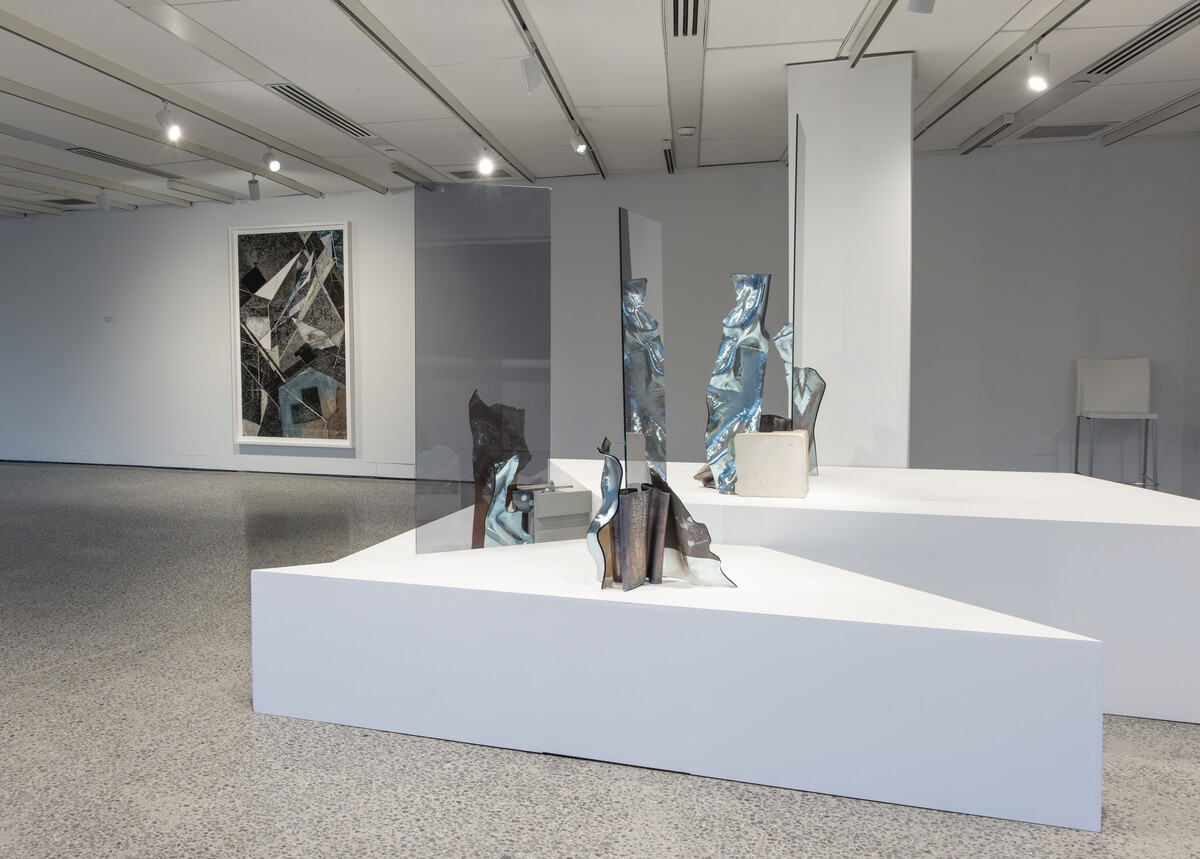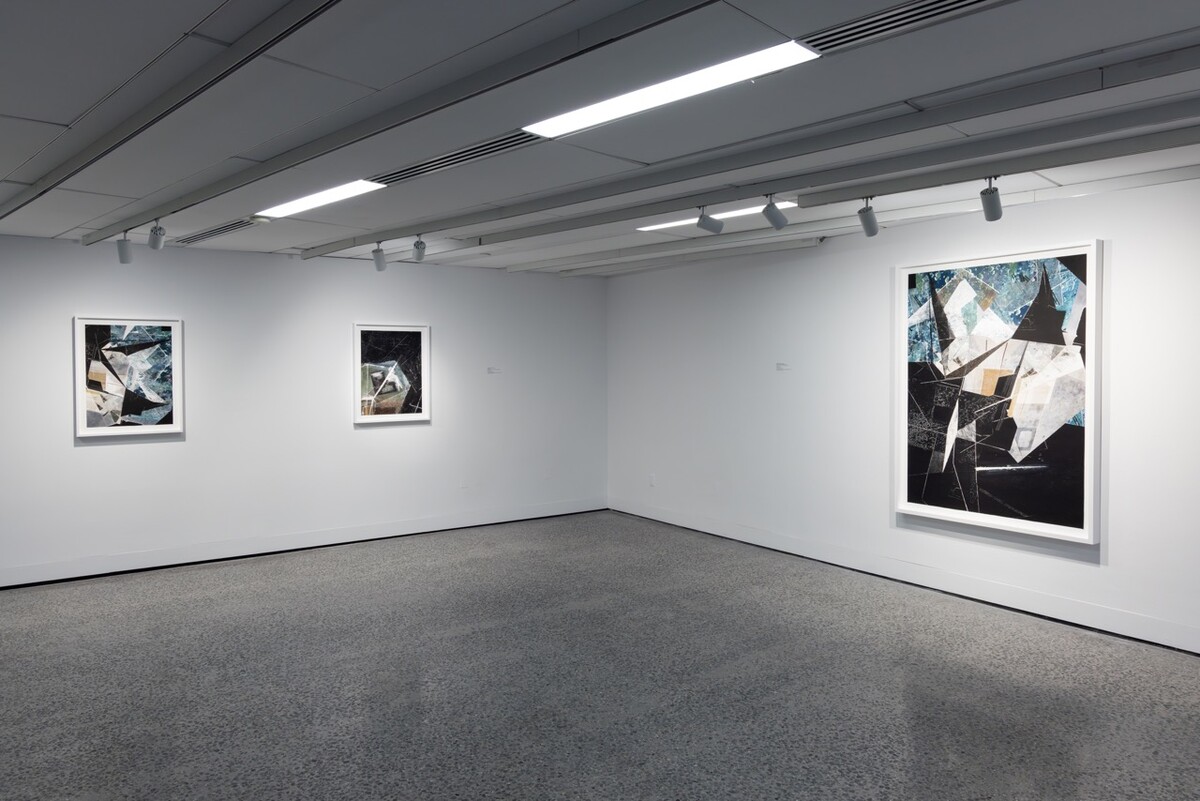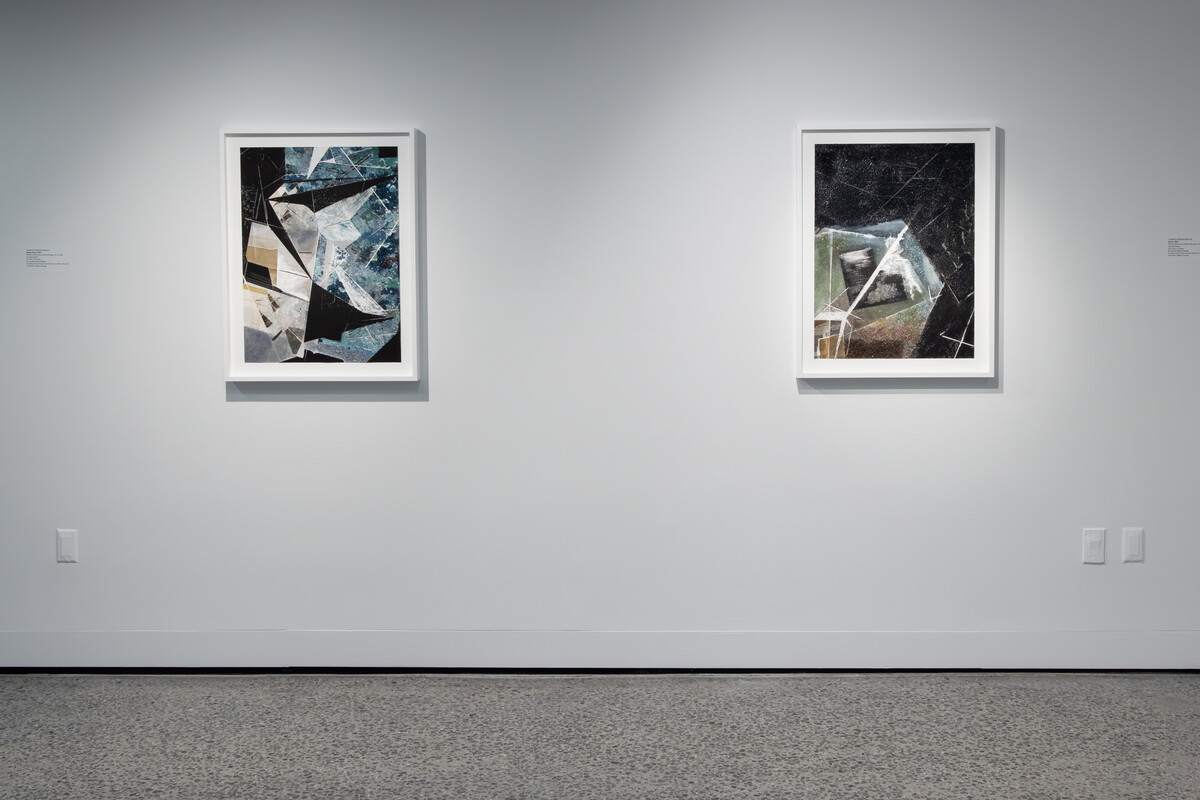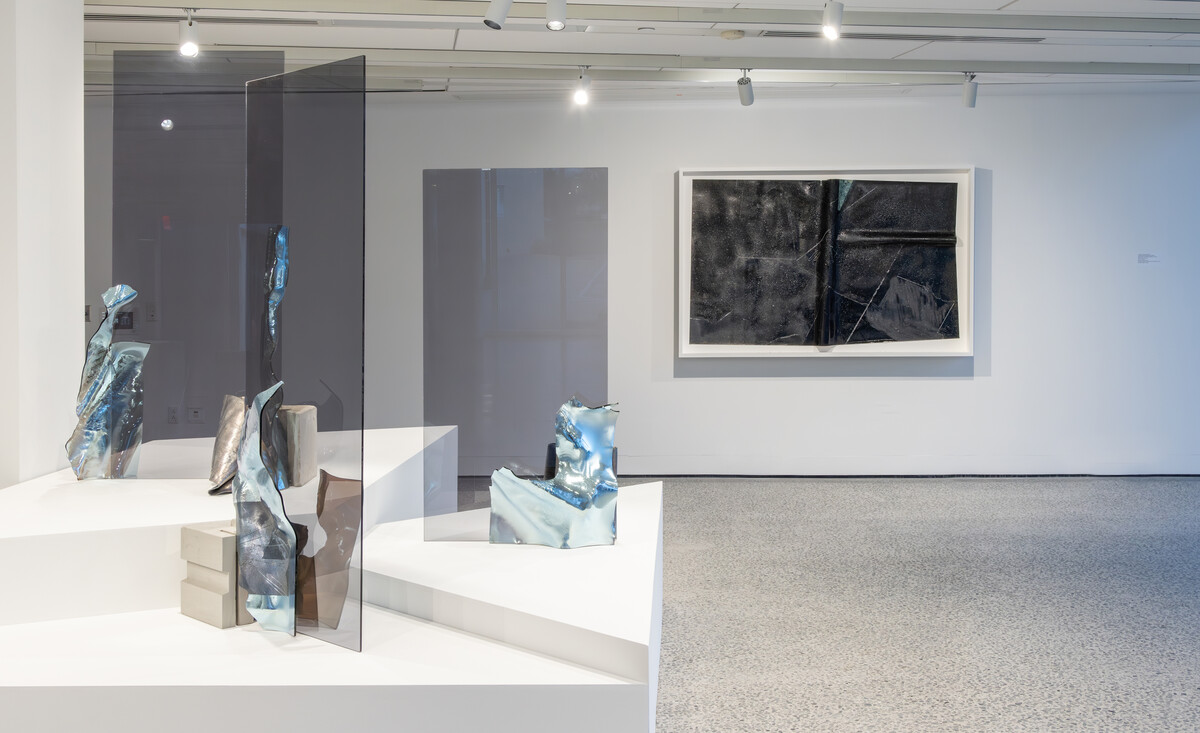
New York-based artist Charisse Pearlina Weston’s solo exhibition engages with themes of surveillance and tactics of Black refusal by transforming materials associated with observation and control through repetition and reuse.
Weston’s exhibition features new glass, lead, and concrete sculptures and works on canvas that challenge fixed narratives and systems of control. The core of this disruption lies in the manipulation of Mirropane, a reflective and transparent glass often used for monitoring. Weston’s alteration of the glass’ reflective surface through kiln-firing and folding disrupts its surveillant function, rendering the surface opaque, cracking the reflective skin, and obscuring her etched text — thus resisting interpretation. This material transformation symbolically subverts the mechanisms of surveillance, questioning who holds power in the act of observing and being observed.

In addition to the stand-alone sculptures, the exhibition’s works on canvas employ Cubist fragmentation and abstraction, incorporating dismantled materials such as glass and frit fused with epoxy and oil stick. They disrupt through formal strategies of breaking apart and reassembling forms and disparate materials, offering multiple, simultaneous viewpoints and functions resisting the singular lens or comprehensive visibility. This strategy underscores the ways in which surveillance reinforces systemic violence by dictating visibility, access, and control. By distorting the boundaries between creation and collapse, Weston’s works metaphorically challenge the structures and ideologies that perpetuate oppression, highlighting Black interiority as a site of resistance and refusal.
Through these materials and methods, Weston blurs lines between visibility and invisibility, observer and observed, offering a layered critique of surveillance as both a material and ideological construct.


